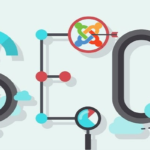Is Instagram’s popularity declining with new algorithm?

One year after Instagram abandoned the chronological feed, we look at the repercussions of the app’s new algorithm
“Have you seen my latest post? No? That’s because Instagram sucks now.”
These were the words shared by Dubai fashion blogger Zahra Khalil on Instagram Stories a couple of weeks ago. Many share the same sentiment, unhappy with Instagram’s latest algorithm update and yearning for simpler days, when visibility wasn’t something you had to pay or strategise for.
Instagram launched in 2010, giving users a platform to share images (and, since 2013, videos), and has evolved significantly over the years. Its original version was chronological. If a user followed 1,000 other users, all of the posts created by those 1,000 people would appear in their feed in the order that they were posted – from the most recent to the oldest. With this model, the user had the option to easily access all of the posts from other users that they followed.
No longer is this the case. Last summer, Instagram started rolling out its new algorithm, and said in an announcement: “To improve your experience, your feed will soon be ordered to show the moments we believe you will care about the most. The order of photos and videos in your feed will be based on the likelihood you’ll be interested in the content, your relationship with the person posting and the timeliness of the post.”
In effect, this meant that a computerised algorithm would be deciding what kind of content an Instagram user should see. While the change was marketed as a positive one, it has left many users disgruntled, and bloggers and start-up businesses facing serious repercussions. Many have worked for years to gain a large numbers of followers, in the ten to hundreds of thousands and more, only to have their posts disappear from their followers’ feeds because of the app’s new format.
Dubai-based boutique Boom & Mellow was well-established before Instagram came along, but since the launch of the app, has used it to post images of new products and drive traffic to the store. But the boutique’s owner, Sima Barazi Haroun, has found that she needs to re-strategise in order to maintain a standing on social media.
“We’re really hoping that the algorithm changes don’t affect our sales, but there is an indication that they may,” says Haroun. “The point of Instagram was to scroll through the main menu to view pictures in the time order they were posted. So now with the new algorithm, if we don’t show up as clients scroll through their feed, it will really affect us.”
Regular users aren’t thrilled about the update either. Sports enthusiasts who used to check Instagram for updates on scores may now see the results of a game from two days ago at the top of their feed. If all of your friends attended a party that you weren’t invited to, a photo they were tagged in could remain at the top of your feed for hours – even though, since then, hundreds of other photos and videos will have been posted by users you follow.
“It’s so frustrating that all posts don’t automatically come up in the feed anymore. There are so many people who I follow, and I don’t see their stuff, so I have to go physically search for them now, and that gets tedious. The whole point is it’s ‘insta’; it’s supposed to be instant, and it’s not,” says Khalil, who is one of the Middle East’s veteran fashion bloggers. She started blogging in 2009 and, since then, has earned a Master’s degree in media production.
Over the years, she has worked with brands like Cartier, Gucci, Burberry and Lancôme, and maintains an active presence on Instagram, which she says is the most popular platform for social media. “Especially since it has become the main part of my job, for it to be affected this way, is horrible,” she says. Khalil says that the algorithm change has been most evident in recent months, as she’s receiving even fewer likes than usual on her posts. This could jeopardise her work with brands, as it affects her followers-to-engagement ratio. While she has more than 90,000 followers, her engagement rates have dropped drastically since the new algorithm was implemented.
Having this kind of discrepancy between a person’s number of followers and engagement activity could cast doubt on the authenticity of their followers. “The only reason why I’m stressing about the numbers now is because it looks bad – I have almost 100,000 followers, but it looks like I’ve bought followers, which I haven’t,” says Khalil.
Dubai-based public relations manager Morgan Venison, who founded the PR and consultancy company MVM Co, helps her clients choose relevant bloggers and “influencers” to partner with. She explains that the algorithm update makes it hard to distinguish which Instagram accounts have grown organically, and which have used scams to appear more popular. “It’s so much easier for people to buy followers and get away with it nowadays – it used to be really easy to tell who bought followers,” she points out.
Competition is stiff, and it’s common for many newer Insta-bloggers to buy fake followers to boost their numbers. External-party sites sell Instagram followers by the thousands, and charge as little as Dh150 for 5,000 followers – a number that would take an average user many years to cultivate. Some users have taken to creating Instagram Pods – groups formed through Facebook or WhatsApp, where members quickly “like” or comment on other group members’ Instagram posts, in efforts to increase engagement and move up the hierarchy.
With the new algorithm, once a user posts a photo or video on Instagram, there is a crucial time window during which the post’s popularity will be determined. The more likes and comments it receives in the few minutes after it is posted, the more likely it is to appear on followers’ feeds.
“I know we shouldn’t be thinking about how many likes we get,” says Khalil, “but we still want our work to be seen, and if it’s not, then what’s the point of putting all that effort and energy into it?”
She says that she used to put a lot of thought into producing each of her Instagram posts – it’s her business, after all. But since the algorithm change, it can seem like a waste of time, since posts aren’t achieving their maximum visibility. She reveals that recently, Instagram has been pushing her to pay to promote her posts, so that they will get viewed by more of her followers – followers who pre-algorithm change, would have seen her photos automatically.
Last month, Instagram, like Facebook, announced that it would be introducing a feature where users getting paid for posts will have to add a “paid partnerships” label to their photos, to make it clear when a post is essentially an advertisement. Khalil says this wouldn’t faze her. “I don’t mind. I like to be as transparent as I can be,” she says. Still, if smaller accounts were to use this feature, they would still have to overcome the popularity-based algorithm, and would likely still be encouraged by the app to pay for greater visibility.
“Over the last few years, Instagram became the new way to advertise, and money got in the way, creating a toxic numbers game. Now, getting our work seen without playing this game is becoming harder and harder,” wrote Sara Melotti in a heartfelt article titled Instagram Created a Monster: A No B.S. Guide to What’s Really Going On on PetaPixel.com last month.
While many users utilise the Instagram Stories function (a Snapchat-inspired feature that allows users to post photos and videos to their “story”, visible only for 24 hours) to announce when they’ve posted new content, according to Khalil, bloggers are now turning to YouTube to reach their audience, or are reviving their old Twitter accounts. “Twitter has become more genuine than Instagram – nothing’s staged, and people are honest,” she says. Instagram’s press office did not respond to our request for comment on such opinions.
In fact, the whole Instagram experience has become discouraging, Khalil continues. “It’s put me off wanting to use it.” Still, at the end of the day, she won’t delete her account – despite the unfavourable algorithm change, Instagram remains a vital part of her work. At one point, she did lose motivation and took a two-week break. “But that messed it up even more, and when I came back, I had even fewer likes, and was pushed even lower [in the algorithm]. You just have to power through it.”
Call Elkmont Media for all of your digital marketing needs, including: social media, website design, SMS, text message marketing, video, and email marketing.
Comments are closed.











